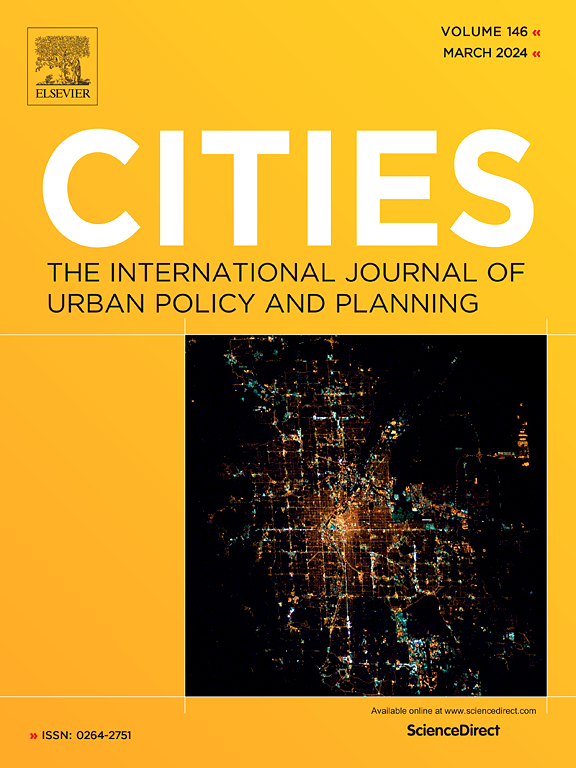Poison or antidote? Exploring the effect of polycentric urban spatial structure on ecological resilience
IF 6.6
1区 经济学
Q1 URBAN STUDIES
引用次数: 0
Abstract
The comprehensive impact of the evolving differentiated urban spatial structure (USS) due to urbanization on ecological performance has not been systematically investigated. Examining the dynamic evolution of USS is essential for enhancing ecological resilience (ER) and achieving sustainable urban planning. Based on the panel data of 276 prefecture-level cities from 2006 to 2021, this study constructs an integrated analysis framework of urban ER and utilizes the Herfindahl-Hirschmann index to measure USS, thereby revealing the effect of USS on ER. The empirical results show that: (1) The compactness of USS decreases by 1 %, then ER will increase by approximately 0.012 %, suggesting that the polycentric spatial structure could enhance ER; (2) Improving factor allocation efficiency, promoting industrial diversification, and stimulating green technology innovation are influence mechanisms of the effect of USS on ER; (3) The polycentric spatial structure is suitable for enhancing ER in cities with partially dispersed and transitional USS, core cities, the cities in southeast regions of the Hu line, and northeast regions of the Bole-Taipei line; (4) There exists a significant positive spatial spillover effect of polycentric USS on ER, but the effect exits a substantial spatial attenuation phenomenon. These findings offer valuable theoretical insights for policymakers to optimize urban spatial governance strategies, enhancing the capacity to address natural hazards and climate change.
毒药还是解药?探讨多中心城市空间结构对生态弹性的影响
城市化导致的城市空间结构演变对生态绩效的综合影响尚未得到系统的研究。研究城市生态系统的动态演变对于增强生态弹性和实现可持续城市规划至关重要。本文基于2006 - 2021年276个地级市的面板数据,构建了城市ER的综合分析框架,并利用赫芬达尔-赫希曼指数(Herfindahl-Hirschmann index)对ER进行测度,揭示了USS对ER的影响。实证结果表明:(1)城市空间紧凑度每降低1%,其内能提高约0.012%,表明多中心空间结构可以提高内能;(2)提高要素配置效率、促进产业多元化、刺激绿色技术创新是企业增加值效应的影响机制;(3)多中心空间结构适合部分分散、过渡性城市、核心城市、沪线东南、博台线东北等城市提升城市生态承载力;(4)多中心USS对ER存在显著的正向空间溢出效应,但存在明显的空间衰减现象。这些发现为决策者优化城市空间治理策略、增强应对自然灾害和气候变化的能力提供了有价值的理论见解。
本文章由计算机程序翻译,如有差异,请以英文原文为准。
求助全文
约1分钟内获得全文
求助全文
来源期刊

Cities
URBAN STUDIES-
CiteScore
11.20
自引率
9.00%
发文量
517
期刊介绍:
Cities offers a comprehensive range of articles on all aspects of urban policy. It provides an international and interdisciplinary platform for the exchange of ideas and information between urban planners and policy makers from national and local government, non-government organizations, academia and consultancy. The primary aims of the journal are to analyse and assess past and present urban development and management as a reflection of effective, ineffective and non-existent planning policies; and the promotion of the implementation of appropriate urban policies in both the developed and the developing world.
 求助内容:
求助内容: 应助结果提醒方式:
应助结果提醒方式:


